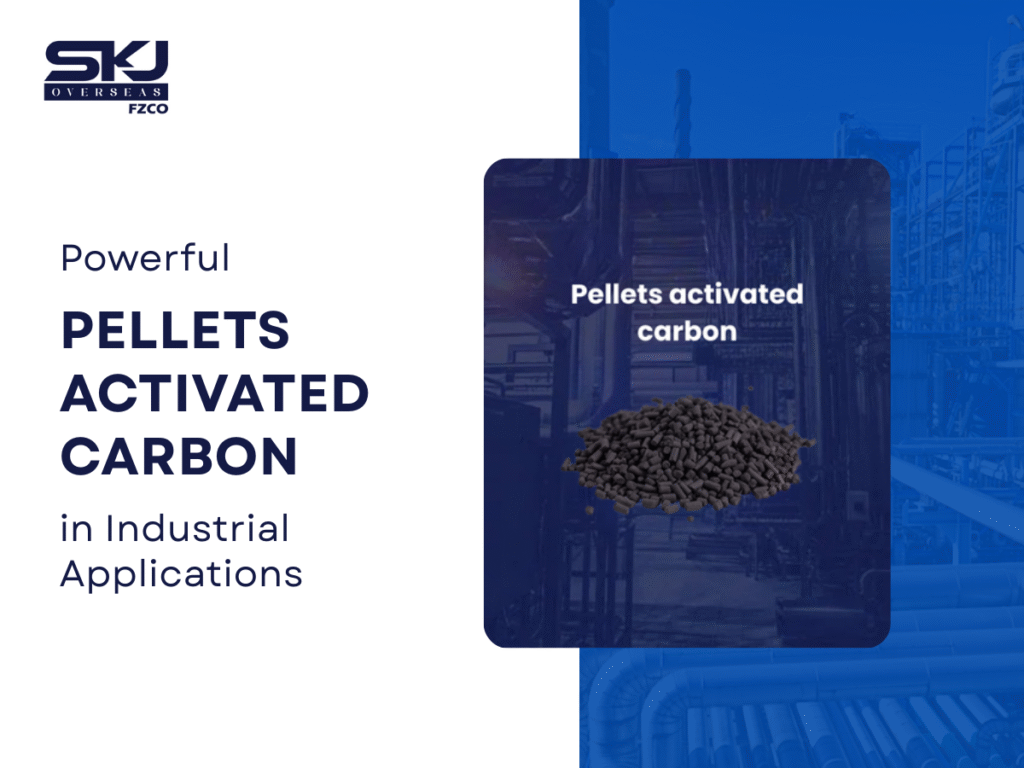Pellets activated carbon in USA is a pivotal component in numerous industrial applications, serving as an essential medium for purification, filtration, and environmental protection. Manufactured through the extrusion of activated carbon powder into cylindrical shapes, these pellets offer enhanced mechanical strength, uniformity, and efficiency in various processes.
What Is Pellets Activated Carbon?
Pellets activated carbon is a form of activated carbon produced by compressing activated carbon powder into uniform cylindrical or extruded shapes. This process results in a product with consistent size and density, making it ideal for applications requiring steady flow and effective adsorption. The high surface area and porosity of these pellets enable them to adsorb a wide range of contaminants, including volatile organic compounds (VOCs), odors, and gases.
Key Characteristics of Pellets Activated Carbon
- Uniform Particle Size and Density: Ensures consistent flow and performance in filtration systems.
- High Mechanical Strength: Reduces dust generation and enhances durability.
- Low Ash Content: Minimizes residue and maintains system cleanliness.
- Large Surface Area: Provides extensive adsorption capacity for contaminants.
- Chemical Stability: Offers resistance to various chemicals, extending service life.
Industrial Applications of Pellets Activated Carbon
1. Air and Gas Purification
Pellets activated carbon is extensively used in air and gas purification systems to remove pollutants such as VOCs, odors, and hazardous gases. Its high adsorption capacity makes it effective in industrial settings where air quality control is paramount.
2. Water Treatment
In water treatment facilities, pellets activated carbon is employed to eliminate organic compounds, chlorine, and other impurities from drinking water and wastewater. Its ability to adsorb a wide range of contaminants ensures safe and clean water for consumption and discharge.
3. Solvent Recovery
Industries involved in chemical manufacturing utilize pellets activated carbon for solvent recovery processes. The carbon’s high surface area allows for efficient adsorption and recovery of valuable solvents, reducing waste and operational costs.
4. Odor Control
Pellets activated carbon is utilized in odor control applications, particularly in wastewater treatment plants and industrial facilities. Its capacity to adsorb malodorous compounds helps maintain a pleasant working environment and comply with environmental regulations.
5. Gold Recovery
In the mining industry, pellets activated carbon is used in the gold recovery process, particularly in the carbon-in-pulp (CIP) and carbon-in-leach (CIL) methods. The carbon adsorbs gold cyanide complexes, facilitating the extraction of gold from ore.
Advantages of Using Pellets Activated Carbon
- Enhanced Efficiency: The uniform shape and size of the pellets allow for consistent flow and optimal contact with contaminants, improving adsorption efficiency.
- Reduced Maintenance: The high mechanical strength of pellets reduces dust generation and wear on equipment, leading to lower maintenance costs.
- Extended Service Life: The durability and chemical stability of pellets activated carbon contribute to a longer service life in various applications.
Standards and Regulations
In the USA, pellets activated carbon manufacturers adhere to various standards and regulations to ensure product quality and safety. These include ASTM standards for activated carbon, which specify requirements for physical and chemical properties, as well as performance criteria. Compliance with these standards ensures that the activated carbon meets the necessary specifications for industrial applications.
Installation and Maintenance of Pellets Activated Carbon
Installation
- System Design: Ensure that the filtration system is designed to accommodate the specific requirements of pellets activated carbon, including flow rate and contact time.
- Pre-Installation Testing: Conduct tests to determine the appropriate grade and quantity of activated carbon needed for optimal performance.
- Proper Loading: Load the pellets into the system carefully to avoid damage and ensure uniform distribution.
Maintenance
- Regular Monitoring: Monitor the performance of the activated carbon regularly to detect any signs of saturation or reduced efficiency.
- Reactivation: When the carbon becomes saturated, consider reactivating it through thermal regeneration to restore its adsorption capacity.
- Replacement: If reactivation is not feasible, replace the spent carbon with fresh pellets to maintain system performance.
FAQ’s About
1. What Is the USA Standard for Activated Carbon?
In USA, activated carbon products are governed by the Bureau of USA Standards (BUS). The relevant standard is IS 13757:1993, which specifies the requirements for activated carbon used in potable water treatment. This standard outlines the physical, chemical, and performance characteristics that activated carbon must meet to ensure its suitability for water purification applications.
2. What Are the Industrial Applications of Activated Carbon?
Activated carbon is utilized in various industrial applications, including:
- Air and Gas Purification: Removal of pollutants such as VOCs and odors.
- Water Treatment: Purification of drinking water and wastewater.
- Solvent Recovery: Reclamation of valuable solvents in chemical processes.
- Odor Control: Elimination of malodorous compounds in industrial settings.
- Gold Recovery: Extraction of gold from ore in mining operations.
3. How Should Pellets Activated Carbon Be Installed and Maintained?
Installation:
- System Design: Ensure the filtration system is compatible with pellets activated carbon.
- Pre-Installation Testing: Determine the appropriate grade and quantity of carbon needed.
- Proper Loading: Load the pellets carefully to avoid damage and ensure uniform distribution.
Maintenance:
- Regular Monitoring: Check the performance of the activated carbon regularly.
- Reactivation: Consider thermal regeneration to restore adsorption capacity.
- Replacement: Replace spent carbon with fresh pellets when necessary.
Conclusion
Pellets activated carbon supplies in USA plays a crucial role in various industrial applications, offering efficient and reliable solutions for purification and filtration needs. By adhering to industry standards and implementing proper installation and maintenance practices, industries can ensure optimal performance and longevity of their activated carbon systems.


